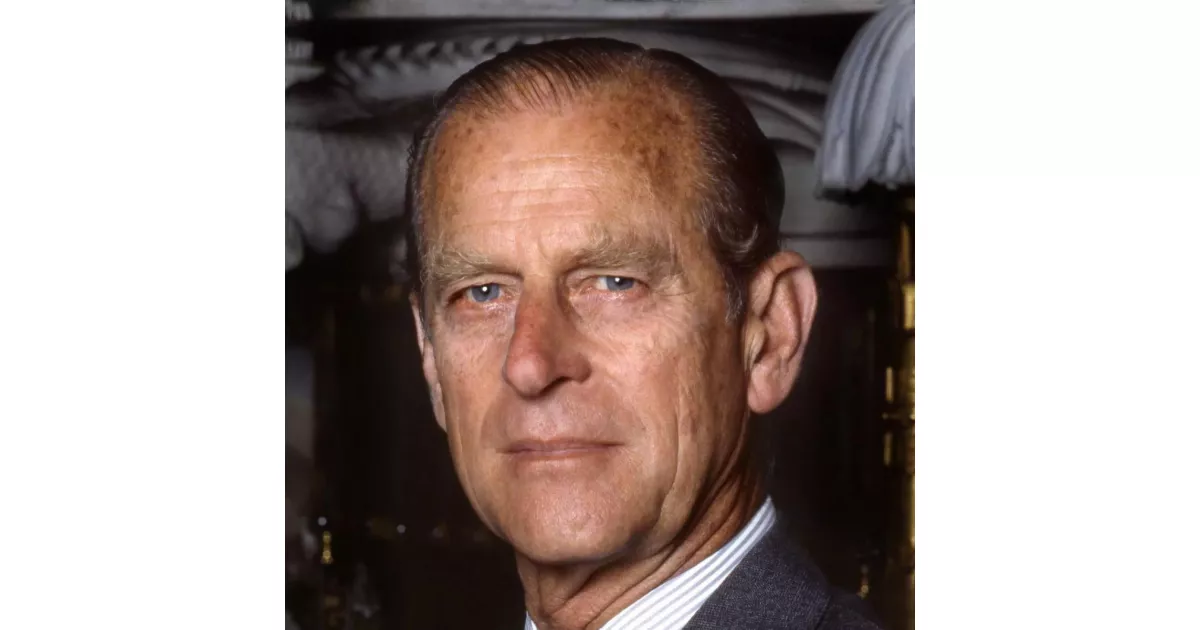Prince Philip, Duke of Edinburgh, was the husband of Queen Elizabeth II and the longest-serving royal consort in British history, from 1952 until his death in 2021. His life was dedicated to supporting the Queen and the monarchy. He had a distinguished naval career and was known for his outspoken nature and commitment to various charitable causes, particularly those related to the environment, sports, and youth development, such as The Duke of Edinburgh's Award.
September 1922: King Constantine I Forced to Abdicate
In September 1922, King Constantine I, Philip's uncle and high commander of the Greek expeditionary force, was forced to abdicate due to significant losses in the war. Andrew, Philip's father, was arrested along with others, leading to his banishment from Greece.
1930: Philip Sent to Britain
In 1930, Philip was sent to Britain to live with his maternal grandmother at Kensington Palace and his uncle George Mountbatten, 2nd Marquess of Milford Haven, at Lynden Manor. He was then enrolled at Cheam School.
1933: Philip Attends Schule Schloss Salem
In 1933 Philip was sent to Schule Schloss Salem in Germany, which was owned by the family of his brother-in-law Berthold, Margrave of Baden.
1937: Death of Cecilie and Family in Air Crash
In 1937, Philip's sister Cecilie, her husband Georg Donatus, their two sons, and Georg Donatus's mother were killed in an air crash at Ostend. Philip attended the funeral in Darmstadt.
1939: Philip Joins Royal Navy
After leaving Gordonstoun in early 1939, Philip completed a term as a cadet at the Royal Naval College, Dartmouth, then repatriated to Greece, living with his mother in Athens for a month in mid-1939. At the behest of King George II of Greece, he returned to Britain in September to resume training for the Royal Navy.
1939: Royal Visit to Dartmouth and Renewed Acquaintance
In 1939, during King George VI and Queen Elizabeth's tour of the Royal Naval College, Dartmouth, Philip was asked to escort the royal couple's daughters, Elizabeth and Margaret. Elizabeth fell in love with Philip and they began exchanging letters.
January 1940: Appointment as Midshipman
In January 1940, Philip was appointed as a midshipman in the Royal Navy. He then spent four months on the battleship HMS Ramillies, protecting convoys in the Indian Ocean.
February 1941: Commissioned as Sub-Lieutenant
On 1 February 1941, Philip was commissioned as a sub-lieutenant in the Royal Navy after completing courses at Portsmouth. He was involved in the Battle of Crete and mentioned in dispatches for service during the Battle of Cape Matapan, and was awarded the Greek War Cross.
June 1942: Appointment to HMS Wallace
In June 1942, Philip was appointed to the destroyer HMS Wallace, which was involved in convoy escort tasks and the Allied invasion of Sicily.
July 1942: Promotion to Lieutenant
On 16 July 1942, Philip was promoted to lieutenant in the Royal Navy.
July 1943: Saving HMS Wallace from Bomber Attack
In July 1943, during the invasion of Sicily, Philip, as second-in-command of HMS Wallace, saved his ship from a night bomber attack by launching a raft with smoke floats.
1944: Service on HMS Whelp
In 1944, Philip moved to the new destroyer, HMS Whelp, where he served with the British Pacific Fleet. He was present in Tokyo Bay when the Japanese Instrument of Surrender was signed.
January 1946: Instructor at HMS Royal Arthur
In January 1946, Philip returned to the United Kingdom on the Whelp and was posted as an instructor at HMS Royal Arthur, the Petty Officers' School in Corsham, Wiltshire.
1946: King Grants Permission to Marry
In 1946, King George VI granted Philip permission to marry Elizabeth, then aged 20.
1946: Philip Asks for Elizabeth's Hand in Marriage
In the summer of 1946, Philip asked George VI for his daughter Elizabeth's hand in marriage. The King granted his request, but stipulated that any formal engagement be delayed until Elizabeth's 21st birthday in April.
March 1947: Philip Adopts Mountbatten Surname
By March 1947, Philip had adopted the surname Mountbatten from his mother's family and stopped using his Greek and Danish royal titles upon becoming a naturalised British subject.
July 1947: Official Engagement Announcement
In July 1947, the official announcement of Prince Philip's engagement to Elizabeth was made after he stopped using his Greek and Danish royal titles and adopted the surname Mountbatten.
July 1947: Engagement Announced
On 9 July 1947, the engagement between Philip and Elizabeth was announced to the public.
October 1947: Received into the Church of England
In October 1947, Philip was officially received into the Church of England by the Archbishop of Canterbury, Geoffrey Fisher.
November 1947: Marriage to Elizabeth and Bestowal of Titles
In November 1947, Philip married Elizabeth, was granted the style His Royal Highness, and was created Duke of Edinburgh, Earl of Merioneth, and Baron Greenwich.
November 1947: Appointed to the Order of the Garter
On the eve of his wedding on 19 November 1947, George VI appointed Prince Philip to the Order of the Garter.
November 1947: Bestowal of Royal Highness and Dukedom
On the morning of his wedding, 20 November 1947, Philip was made the Duke of Edinburgh, Earl of Merioneth, and Baron Greenwich of Greenwich in the County of London. The day before, the King bestowed the style of Royal Highness on Philip.
1947: President of National Playing Fields Association
In 1947, Philip became president of the National Playing Fields Association, now known as Fields in Trust, a role he held for 64 years.
March 1948: First Solo Engagement as Duke of Edinburgh
In March 1948, Philip's first solo engagement as Duke of Edinburgh was presenting prizes at the boxing finals of the London Federation of Boys' Clubs at the Royal Albert Hall.
July 1948: Introduction to the House of Lords
On 21 July 1948, Philip was introduced to the House of Lords, immediately before his uncle Louis Mountbatten.
November 1948: Birth of Prince Charles
In November 1948, Philip and Elizabeth's first child, Prince Charles, was born.
1949: President of Marylebone Cricket Club
In 1949, Philip began his first term as president of the Marylebone Cricket Club.
1949: Stationed in Malta
In 1949, Philip was stationed in Malta as the first lieutenant of the destroyer HMS Chequers, the lead ship of the 1st Destroyer Flotilla in the Mediterranean Fleet, residing at Villa Guardamangia.
1949: Friendship with Uffa Fox
In 1949, Prince Philip, a keen yachtsman, formed a friendship with boat designer and sailing enthusiast Uffa Fox in Cowes.
July 1950: Promotion to Lieutenant Commander
In July 1950, Philip was promoted to lieutenant commander and given command of the frigate HMS Magpie.
August 1950: Birth of Princess Anne
In August 1950, Philip and Elizabeth's second child, Princess Anne, was born.
July 1951: End of Active Naval Career
Philip's active naval career ended in July 1951, though he was promoted to commander the following year.
November 1951: Appointment to the Privy Council
In November 1951, Elizabeth and Philip were both appointed to the Privy Council after touring Canada.
1951: Fellow of the Royal Society
In 1951, Philip was appointed a fellow of the Royal Society.
January 1952: Commonwealth Tour
At the end of January 1952, Elizabeth and Philip set out on a tour of the Commonwealth.
February 1952: Elizabeth Becomes Queen
In February 1952, while in Kenya, Elizabeth's father died, and she became queen. Philip broke the news to her, and they returned to the United Kingdom.
June 1952: Promotion to Commander
In June 1952, Philip was promoted to commander, although his active naval career had ended the previous year in July 1951.
December 1952: Initiation into Freemasonry
In December 1952, Philip was initiated into Freemasonry by the Worshipful Master of Navy Lodge No 2612, honouring a commitment to George VI.
1952: Elizabeth's Accession to the Throne
Before Elizabeth's accession in 1952, Philip and Elizabeth had two children: Prince Charles and Princess Anne.
1952: Patron of the Royal Society of Arts
From 1952, Prince Philip was the patron of the Royal Society of Arts until 2011.
1952: Patron of The Industrial Society
In 1952, Philip became patron of The Industrial Society (since renamed The Work Foundation) and took over the role of the Ranger of Windsor Great Park.
1952: Philip Leaves Active Military Service
In 1952, Philip left active military service, having reached the rank of commander, when Elizabeth ascended the throne.
1952: First Airborne Flying Lesson
In 1952, Prince Philip had his first airborne flying lesson, marking the beginning of his career as a pilot.
1952: Engagements and Speeches
Since 1952, Prince Philip completed 22,219 solo engagements and 5,493 speeches.
1952: Start of Solo Engagements
Since 1952, Prince Philip had completed 22,219 solo engagements, marking the beginning of his extensive individual contributions to royal duties.
1953: Parliament Passes Regency Bill
In 1953, Parliament passed a bill ensuring that Philip would serve as regent for their son Charles in the event of Elizabeth's unexpected death.
1953: Presentation of Royal Air Force Wings
In 1953, Prince Philip was presented with Royal Air Force wings, recognizing his achievements in flying.
1953: Coronation Commission Chairman
In 1953, as chairman of the Coronation Commission, Philip was the first royal family member to fly in a helicopter, visiting troops for the ceremony. He swore to be Elizabeth's "liege man of life and limb" during the coronation service.
1954: Commonwealth Tour
In 1954, Philip and Elizabeth continued their tour of the Commonwealth, leaving their children in Britain.
1955: President of The Football Association
From 1955 to 1957, Philip was president of The Football Association.
1956: Founding of The Duke of Edinburgh's Award
In 1956, Philip and Kurt Hahn founded The Duke of Edinburgh's Award and he established the Commonwealth Study Conferences. In the same year, he opened the 1956 Summer Olympics in Melbourne and visited the Antarctic during a world tour.
1956: Presentation of Helicopter Wings
In 1956, Prince Philip received helicopter wings with the Royal Navy, adding to his qualifications as a pilot.
February 1957: Title of Prince of the United Kingdom
On February 22, 1957, Elizabeth granted Philip the style and title of a Prince of the United Kingdom.
October 1957: Appointment to Queen's Privy Council for Canada
On October 14, 1957, Philip was appointed to the Queen's Privy Council for Canada, taking his Oath of Allegiance before the Queen in person at Rideau Hall.
1957: President of The Football Association
From 1955 to 1957, Philip was president of The Football Association.
1957: Made a British Prince
In 1957, Elizabeth formally issued letters patent making Philip a British prince.
1957: World Tour Aboard HMY Britannia
In 1957, Philip traveled the world aboard the newly commissioned HMY Britannia, opening the 1956 Summer Olympics in Melbourne and visiting the Antarctic.
1959: President of BAFTA
Between 1959 and 1965, Philip was the president of BAFTA.
1959: Private Pilot's Licence and Solo Flight
In 1959, Prince Philip obtained his private pilot's licence and flew solo in a Druine Turbulent, becoming the first (and only, as of April 2021) member of the royal family to fly a single-seat aircraft.
February 1960: Order in Council on Surname
In February 1960, the Queen issued an Order in Council declaring that Mountbatten-Windsor would be the surname of the couple's male-line descendants.
1960: Initiation as Honorary Ovate
In 1960, Philip attended the National Eisteddfod of Wales, wearing a long green robe, and was initiated as an Honorary Ovate by the Archdruid of Wales, Edgar Phillips.
1960: Princess Margaret's Marriage
In 1960, Princess Margaret married Antony Armstrong-Jones, who was later created Earl of Snowdon.
1960: Coining of "Dontopedalogy"
In 1960, during an address to the General Dental Council, Prince Philip jokingly coined the word "dontopedalogy" to describe the science of putting one's foot in one's mouth, a science he claimed to have practiced for many years.
1961: First Royal Family Member Interviewed on Television
In 1961, Philip became the first member of the royal family to be interviewed on television, appearing on Panorama to discuss the Commonwealth Technical Training Week.
1961: Helped Found the World Wildlife Fund
In 1961, Philip helped found the World Wildlife Fund and served as its UK president from 1961 to 1982.
1962: Flying Tour of South America
In 1962, Prince Philip undertook a two-month flying tour of South America, with Captain Peter Middleton (grandfather of Catherine, Princess of Wales) as his co-pilot.
1963: Helped Found the Australian Conservation Foundation
In 1963 Philip helped found the Australian Conservation Foundation.
March 1964: Birth of Prince Edward
In March 1964, Elizabeth and Philip's fourth child, Prince Edward, was born.
1964: President of the International Equestrian Federation
From 1964 to 1986, Philip was president of the International Equestrian Federation.
1965: President of BAFTA
Between 1959 and 1965, Philip was the president of BAFTA.
1969: Appearance on Meet the Press
In 1969, Philip made an appearance on Meet the Press during a tour of North America.
1969: Views on Republicanism in Canada
While in Canada in 1969, Philip spoke about his views on republicanism.
1970: Founding of The Maritime Trust
In 1970, Philip was involved with the founding of The Maritime Trust for restoring and preserving historic British ships.
1971: Switch to Carriage Driving
In 1971, Prince Philip stopped playing polo and began competing in carriage driving, a sport he helped expand. He also oversaw the drafting of the sport's early rule book.
1974: President of Marylebone Cricket Club
In 1974, Philip began his second term as president of the Marylebone Cricket Club.
1976: Conversation with White House Butlers
During a visit to the White House in 1976, Prince Philip engaged a White House butler and a fellow butler in conversation and poured them drinks, demonstrating his down-to-earth manner.
1977: Honorary Fellow of Zoological Society of London
In 1977, Philip was appointed an honorary fellow of the Zoological Society of London, having been president for two decades.
1978: Princess Margaret's Divorce
In 1978, Princess Margaret divorced Antony Armstrong-Jones; she did not remarry.
1980: World Champion in Four-in-Hand Driving
In 1980, Philip became world champion in four-in-hand driving with the British national team.
1981: Counseling Charles to Propose to Diana
At the beginning of 1981, Philip wrote to his son Charles, counseling him to either propose to Lady Diana Spencer or break off their courtship, pressuring Charles to make a decision.
1981: International President of World Wildlife Fund
In 1981, Philip became the international president of the World Wildlife Fund.
1982: UK President of World Wildlife Fund
From 1961 to 1982, Philip served as the UK president of the World Wildlife Fund.
1983: Journalist Writing on Freemasonry Views
In 1983, a journalist wrote that Philip's mother-in-law and uncle, Lord Mountbatten, had unfavourable views of Freemasonry, noting that Philip took no further part in the organisation after his initiation.
1986: "Slit-Eyed" Comment in China
During a state visit to China in 1986, Prince Philip joked to British students from Xi'an's Northwest University that if they stayed much longer, they would go "slit-eyed." Despite the British press portraying it as racially intolerant, Chinese authorities were reportedly unconcerned.
1986: President of the International Equestrian Federation
From 1964 to 1986, Philip was president of the International Equestrian Federation.
1990: Parliamentary Annuity
Since 1990, Philip received a Parliamentary annuity (of £359,000) to meet official expenses in carrying out public duties.
1992: Breakdown of Charles and Diana's Marriage
By 1992, Charles and Diana's marriage had broken down, and Elizabeth and Philip hosted a meeting to attempt reconciliation, without success. Philip wrote letters to Diana about the extra-marital affairs.
1992: Philip on Speaking Greek
In 1992, Philip stated that he "could understand a certain amount" of Greek, though he primarily thought of himself as Danish and spoke mostly English.
1993: Confirmation of Romanov Family Remains Identity
In 1993, scientists confirmed the identity of the remains of the Romanov family by comparing their mitochondrial DNA to living matrilineal relatives, including Prince Philip.
1996: Charles and Diana's Divorce
Charles and Diana divorced in 1996, following their separation in 1992.
1996: President Emeritus of World Wildlife Fund
In 1996, Philip became the president emeritus of the World Wildlife Fund.
August 1997: Death of Diana
In August 1997, Diana was killed in a car crash in Paris. Philip was on holiday at Balmoral, and he and Elizabeth shielded their grandsons from press interest. Philip's counsel to Prince William was significant.
August 1997: Retirement as a Pilot
In August 1997, after 44 years as a pilot, Prince Philip retired, having accumulated 5,986 hours spent in 59 different aircraft.
May 1999: Accusations of Insulting Deaf Children
In May 1999, Prince Philip was accused by British newspapers of insulting deaf children at a pop concert in Wales by saying: "No wonder you are deaf listening to this row."
1999: Cessation of Membership in House of Lords
In 1999, Philip, his sons, and other royals ceased to be members of the House of Lords following the House of Lords Act 1999.
2000: Views on Longevity
In a 2000 interview, at age 79, Prince Philip expressed his dislike of living an extremely long life, stating he could not "imagine anything worse" and had "no desire whatsoever" to become a centenarian.
2007: Appointment as Colonel-in-Chief of The Rifles
In 2007, Prince Philip was appointed as Colonel-in-Chief of The Rifles, a position he held until July 2020.
2008: Hospital Admission for Chest Infection
In 2008, Prince Philip was admitted to King Edward VII's Hospital in London for a chest infection. He walked into the hospital unaided and was discharged three days later after a quick recovery.
2008: Inquest into Diana's Death
In 2008, the inquest into Diana's death concluded that there was no evidence of a conspiracy, dispelling claims made by Mohamed Al-Fayed.
April 2009: Longest-Serving British Royal Consort
In April 2009, Prince Philip became the longest-serving British royal consort, surpassing Charlotte of Mecklenburg-Strelitz, who was the wife of George III.
June 2011: Slowing Down and New Title
In June 2011, during an interview for his 90th birthday, Prince Philip announced he would slow down and reduce his duties. For his 90th birthday, the Queen gave him the title Lord High Admiral.
December 2011: Hospitalization for Chest Pains
In December 2011, while staying at Sandringham House, Prince Philip experienced chest pains and was admitted to Papworth Hospital, Cambridgeshire. He underwent successful coronary angioplasty and stenting and was discharged a few days later.
2011: Sovereign Grant Act
In 2011, the Parliamentary annuity was unaffected by the reform of royal finances under the Sovereign Grant Act.
2011: End of Patronage of the Royal Society of Arts
Prince Philip ended his patronage of the Royal Society of Arts in 2011, a role he held since 1952.
June 2012: Hospitalization During Diamond Jubilee
In June 2012, during celebrations for his wife's Diamond Jubilee, Prince Philip was taken from Windsor Castle to King Edward VII's Hospital due to a bladder infection. He was later discharged.
August 2012: Hospital Admission for Infection Recurrence
In August 2012, Prince Philip was admitted to Aberdeen Royal Infirmary for five nights as a precautionary measure after a recurrence of a bladder infection while staying at Balmoral Castle.
2012: Diamond Jubilee Speech
In 2012, during her Diamond Jubilee speech, Elizabeth referred to Philip as her "constant strength and guide."
February 2013: Oldest-Ever Male British Royal
In February 2013, Prince Philip became the oldest-ever male British royal.
June 2013: Exploratory Abdominal Operation
In June 2013, Prince Philip was admitted to the London Clinic for an exploratory operation on his abdomen, spending 11 days in the hospital.
2013: Prince William Takes Over as President of Fields in Trust
In 2013, Prince William took over the role of president of Fields in Trust from Philip, who had held the position since 1947.
April 2014: Discovery of Newsreel Film
In April 2014, an old British Pathé newsreel film was discovered showing Prince Philip's 1962 two-month flying tour of South America. His co-pilot was Captain Peter Middleton, the grandfather of his granddaughter-in-law Catherine.
May 2014: Public Appearance with Bandage
In May 2014, Prince Philip appeared in public with a bandage on his right hand after undergoing a "minor procedure" at Buckingham Palace the preceding day.
December 2015: Relinquished Role as Honorary Air Commodore-in-Chief
On 16 December 2015, Prince Philip relinquished his role as Honorary Air Commodore-in-Chief. Catherine, then Duchess of Cambridge, succeeded him as Honorary Air Commandant.
June 2017: Hospital Admission for Infection
In June 2017, Prince Philip was taken from Windsor to London and admitted to King Edward VII's Hospital after being diagnosed with an infection, spending two nights there. He was unable to attend the State Opening of Parliament and Royal Ascot.
August 2017: Retirement from Royal Duties
On 2 August 2017, at the age of 96, Prince Philip retired from royal duties, marking the occasion with a final solo public engagement with the Royal Marines. Since 1952, he had completed 22,219 solo engagements.
November 2017: 70th Wedding Anniversary
On 20 November 2017, Prince Philip and Queen Elizabeth celebrated their 70th wedding anniversary, making her the first British monarch to celebrate a platinum wedding anniversary.
November 2017: Appointed Knight Grand Cross of the Royal Victorian Order
On their 70th wedding anniversary, 20 November 2017, Elizabeth appointed Philip Knight Grand Cross of the Royal Victorian Order.
2017: Retirement from Royal Duties
In 2017, at the age of 96, Philip retired from royal duties.
2017: British Heart Foundation Patronage
In 2017, the British Heart Foundation thanked Philip for being its patron for 55 years, during which he "supported the creation of nine BHF-funded centres of excellence".
April 2018: Hip Replacement Surgery
In April 2018, Prince Philip was admitted to King Edward VII's Hospital for a planned hip replacement after missing the annual Maundy and Easter Sunday services. He was discharged the following day.
January 2019: Car Collision Near Sandringham Estate
In January 2019, Prince Philip was involved in a car collision near the Sandringham Estate. He was reported to be uninjured, but the occupants of the other car were injured and taken to hospital. He voluntarily surrendered his driving license three weeks later.
April 2019: Third-Longest-Lived Member of the British Royal Family
In April 2019, Prince Philip became the third-longest-lived member of the British royal family, following Princess Alice, Duchess of Gloucester, and Queen Elizabeth The Queen Mother.
April 2019: Driving on Private Estates
In April 2019, Prince Philip was seen driving around private estates, despite having surrendered his driving license following a car accident earlier that year.
May 2019: Last Public Appearance Before Hospitalization
In May 2019, Prince Philip made his last public appearance before being hospitalized in December, attending Lady Gabriella Windsor's wedding.
December 2019: Hospital Stay for Pre-existing Condition
In December 2019, Prince Philip stayed at King Edward VII's Hospital and received treatment for a "pre-existing condition," described by Buckingham Palace as a precautionary measure. He had not been seen in public since May 2019.
June 2020: Photo Released During COVID-19 Pandemic
In June 2020, a photo of Prince Philip and Queen Elizabeth isolating at Windsor Castle during the COVID-19 pandemic was released ahead of his 99th birthday.
July 2020: Stepping Down as Colonel-in-Chief of The Rifles
In July 2020, Prince Philip stepped down as Colonel-in-Chief of The Rifles, a position he had held since 2007. His daughter-in-law Camilla, Duchess of Cornwall, succeeded him.
January 2021: COVID-19 Vaccination
In January 2021, Prince Philip and Queen Elizabeth were vaccinated against COVID-19 by a household doctor at Windsor Castle.
February 2021: Hospital Admission and Treatment for Infection
In February 2021, Prince Philip was admitted to King Edward VII's Hospital as a "precautionary measure" after feeling unwell. He was visited by Prince Charles, and Buckingham Palace confirmed he was "responding to treatment" for an infection.
April 2021: Legacy as Solo Aircraft Pilot
As of April 2021, Prince Philip remained the only member of the royal family to have flown a single-seat aircraft, achieving this in 1959.
April 2021: Funeral Arrangements
Following Prince Philip's death in April 2021, Operation Forth Bridge, the plan for announcing his death and organizing his funeral, was commenced. Due to COVID-19 pandemic regulations, the funeral took place on April 17, 2021, at St. George's Chapel, Windsor Castle, with limited mourners. He was temporarily interred in the Royal Vault.
April 2021: Death of Prince Philip
On the morning of April 9, 2021, Prince Philip died peacefully of "old age" at Windsor Castle, at the age of 99. He was the longest-serving royal consort in world history.
June 2021: Royal Collection Trust Exhibition: Prince Philip: A Celebration
In June 2021, to mark the centenary of Prince Philip's birth, the Royal Collection Trust held an exhibition at Windsor Castle and the Palace of Holyroodhouse. The exhibition, titled 'Prince Philip: A Celebration,' showcased around 150 personal items related to him.
July 2021: Sealing of Philip's Will
In July 2021, a High Court ruling ordered that Prince Philip's last will and testament would be sealed for at least 90 years to protect the Queen's "dignity and standing". A private hearing was held, after which the President of the Family Division made the order.
September 2021: RNLI names lifeboat 'Duke of Edinburgh'
In September 2021, the Royal National Lifeboat Institution (RNLI) honoured Prince Philip by naming their new state-of-the-art lifeboat 'Duke of Edinburgh'. In September 2021, BBC One broadcast 'Prince Philip: The Royal Family Remembers', a documentary initially planned for his centenary.
2021: Death of Prince Philip
In 2021, Prince Philip died, marking the end of the longest marriage of any British monarch, lasting over 73 years.
January 2022: The Guardian Challenges Judge's Decision
In January 2022, The Guardian challenged the judge's decision to exclude the press from the hearing regarding the sealing of Prince Philip's will, arguing for less restrictive measures for open justice, and was granted leave to appeal.
March 2022: Service of Thanksgiving at Westminster Abbey
On March 29, 2022, a service of thanksgiving for Prince Philip's life took place at Westminster Abbey, attended by Queen Elizabeth, foreign royalty, and politicians.
July 2022: Court of Appeal Dismisses The Guardian's Arguments
In July 2022, the Court of Appeal dismissed The Guardian's arguments regarding the exclusion of the press from the hearing about sealing Prince Philip's will, stating that informing the press would have risked a "media storm".
September 2022: Interment with Queen Elizabeth
Following her death on September 8, 2022, Queen Elizabeth was interred with Prince Philip in the King George VI Memorial Chapel at St. George's on the evening of September 19 after her state funeral.
Mentioned in this timeline
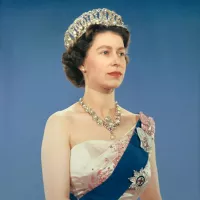
Elizabeth II reigned as Queen of the United Kingdom and...
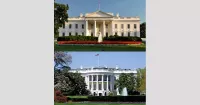
The White House located at Pennsylvania Avenue NW in Washington...
The Guardian is a British daily newspaper founded in as...
Germany officially the Federal Republic of Germany is a Western...
China officially the People's Republic of China PRC is an...
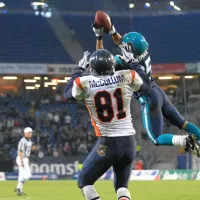
Football is a family of team sports primarily involving kicking...
Trending

Jermaine Demetrius Burton is an American professional football wide receiver and return specialist currently playing for the Cincinnati Bengals of...

7 months ago Paolo Banchero's NBA Journey: Overcoming Injury, Praising Teammates, and Hope for the Future

6 months ago Julia Fox Ditches Beauty Trend, Net Worth Soars: An 'It Girl' in 2025
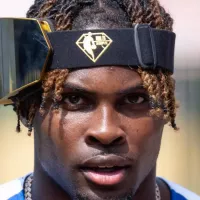
1 month ago Jayden Reed Injury Update: Packers WR Setback and Recovery Timeline
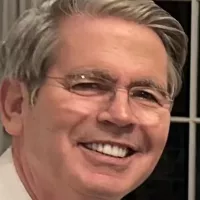
14 days ago Scott Bessent Predicts Oil Price Drop Contingent on Venezuelan Events; Gas Prices Impacted.
4 days ago David Corenswet Visits Alma Mater; Brainiac Shortlist Includes Bang, Smith, and Rockwell
Popular
Matt and Ross Duffer known as the Duffer Brothers are...
Aftyn Alyssa Behn is an American politician currently serving as...

Candace Owens is an American conservative political commentator and author...

XXXTentacion born Jahseh Dwayne Ricardo Onfroy was a controversial yet...

Ilhan Omar is an American politician currently serving as the...
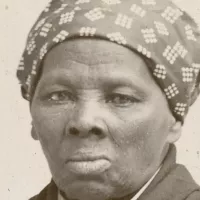
Harriet Tubman was a pivotal American abolitionist and social activist...
